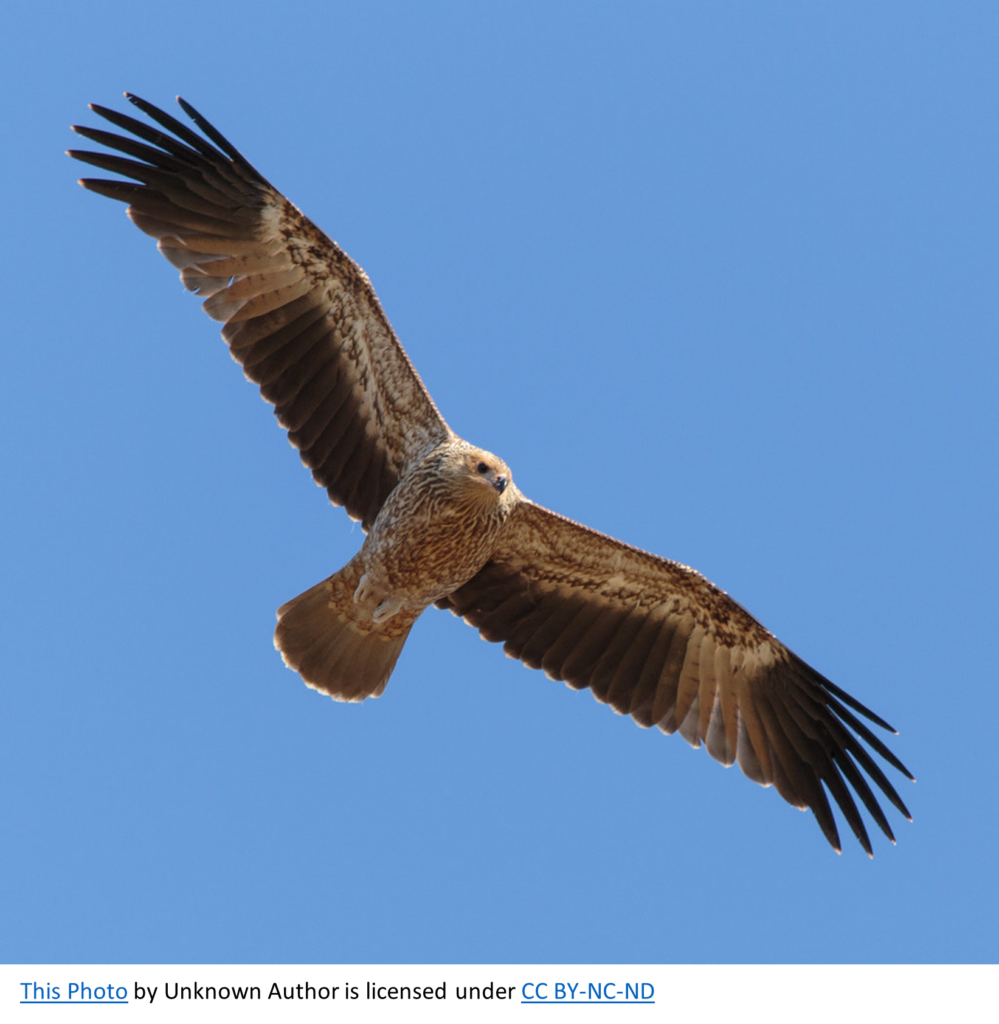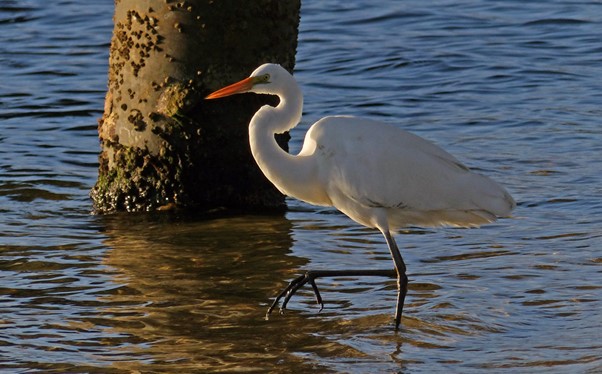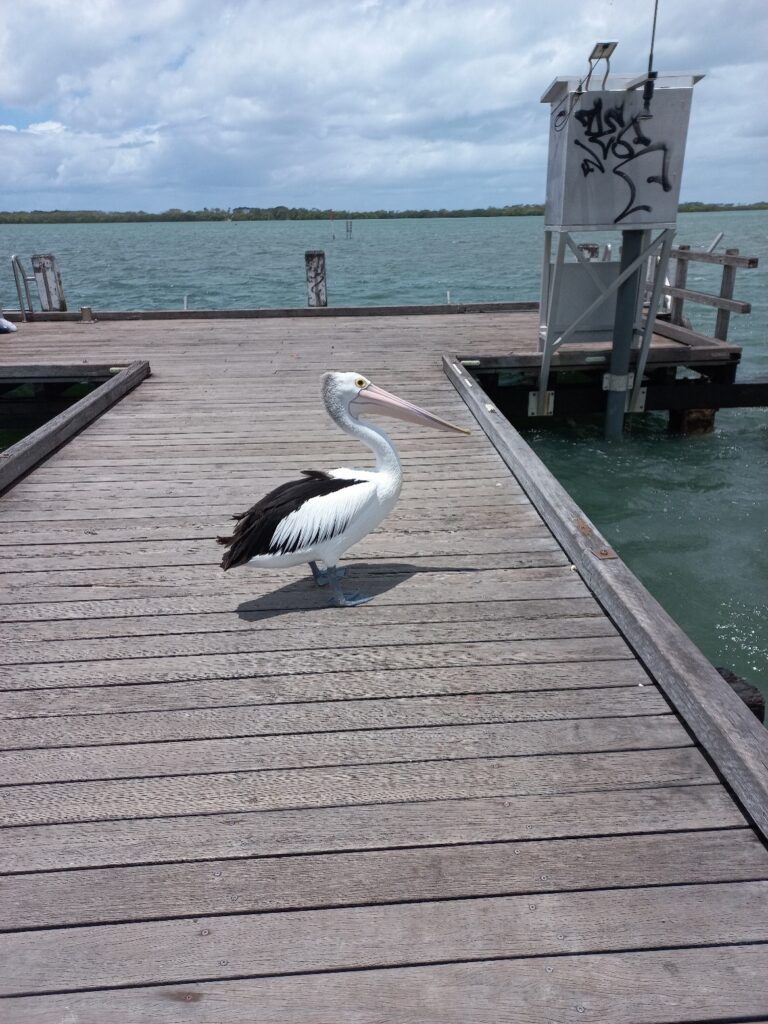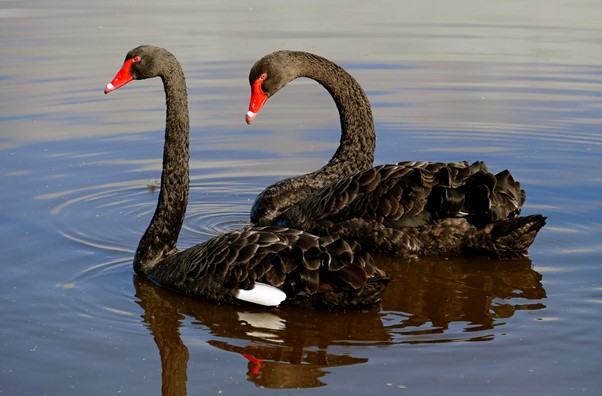If you hire the Caloundra Houseboat, there’s a fair chance you’ll find yourself drawn to the boat’s expansive Top Deck.
It’s furnished with a comfortable outdoor lounge suite and table, but what makes it special is the view.
The Wallamba is a big houseboat – it’s 13m long and it’s a little under 5m high – and with those dimensions, there’s plenty of room for everyone to stretch their legs on the Top Deck which runs almost the full length of the boat.
It needs to be big – because it’s very popular. Caloundra is known for its sunsets – and there’s no better way to watch the sun go down than sitting on the Top Deck, with a glass of bubbles. It’s magical and you’ll be sharing with an extraordinary array of birds, settling into their nests for th night.
And it’s just as magical to wake next morning and hear the passage come to life. The sunrise might be as spectacular, but the calm and tranquillity of the passage in the early morning is something else.
Pumicestone Passage is not only a marine park, it is also Ramsar listed – meaning that it’s recognised by the international community as a wetland of worldwide significance. It has that honour because it is home to tens of thousands of migratory and wading birds during summer, not to mention the others which stay in the passage all year round.
So what will you see from the Top Deck – let’s start with the Birds of Prey – at the top of the chain is the White Bellied Sea Eagle:

– they are the biggest on the passage and in fact Australia’s second biggest eagle behind the iconic Wedge Tail. Close up, their big white chest makes identification easy – further away, wait until they start to glide and you will see their wings form a perfect V with the body below the wings.
The Osprey is smart – they can dive under the water to catch fish and always carry the fish facing forward.

The Whistling Kite is not as big, and not nearly as pretty either. However, we call him the Pavarotti of the Sky – what he lacks in good looks, he makes up for with a beautiful voice. Their whistle will probably wake you in the morning, and keep you entertained during the day.

The prettiest by far is the Brahminy Kite… bronze-coloured wings and so beautiful, they inspired the Indonesian Coat of Arms. You’ll fall in love with these guys.

The heroes though, are the migratory birds. These characters spend summer here in the passage and the winter in the northern hemisphere. These birds travel up to 25,000km a year, in fact the Godwit holds the distance record flying 11,000km in eight days.
Here’s a quick description of some of those migratory birds…. But you are probably better off equipping yourself with a decent pair of binoculars and using Google to identify them for you.
Whimbrel – look out for a long downward curved bill.

Eastern Curlew – they’re noisy with that loud “curlee” call. They’re the biggest migratory wader – up to 65cm tall.
Herons – lots of different varieties but check out the White faced heron, which as the name suggests has as you guessed a white face.
Egrets – they’re one of my favourites . There’s a Little egret, an intermediate egret and a Great Egret – keep your eye out for white birds and then try to work out which is which. One tip.. the little one can’t keep still. Their claim to fame is they along with the emu was Australia’s first protected bird species. In the early 1920’s, they were highly sought after by Milliners for their breeding plumage and needed the protection to survive.

Pelicans – Don’t be surprised if you only see a handful – they’ve been out on flooded inland rivers such as the Darling busy breeding, but they are slowly making their way back to the coast.

Black Swans – you will see a heap of these… they inspired the name Maroochydore after the Gubbi Gubbi word meaning “red billed” swan.

The best time to go bird watching is at low tide, when the migratory birds are feeding on the exposed sandbanks.
Leave a Reply